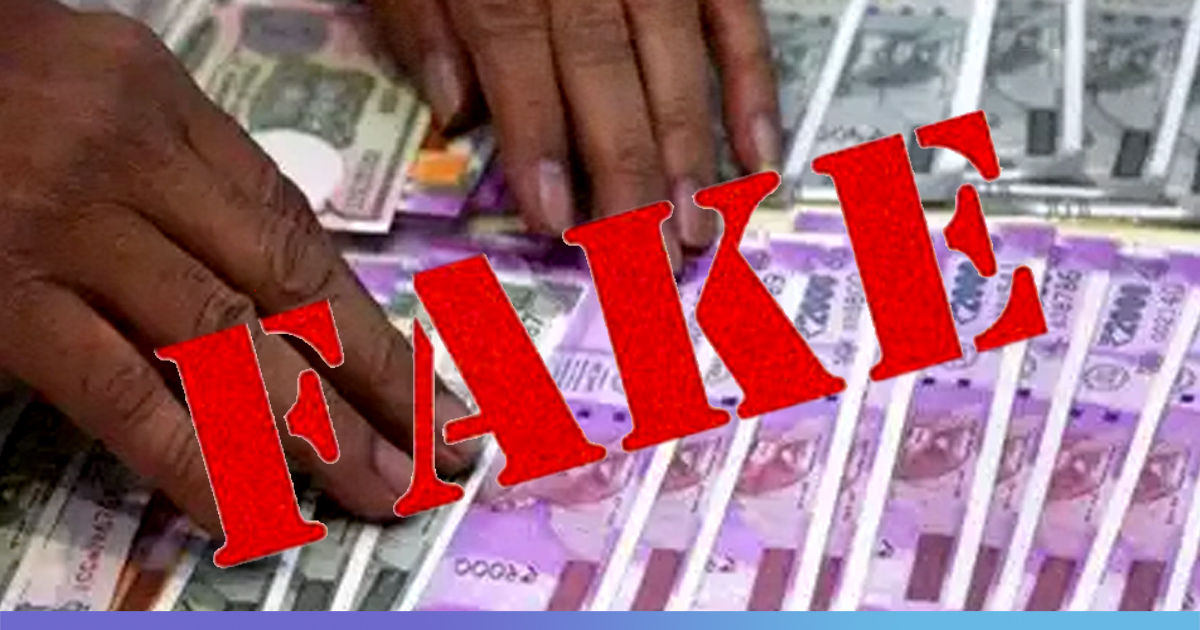On Sunday, a man was caught with fake currency worth Rs 82,000 from the Mumbra district in Maharashtra. The accused Jasim also known as Vasim Salim Shaikh (42) was arrested by the cops after a raid was conducted at his residence in Amrut Nagar locality on Sunday morning following a tip-off, said Madhukar Kad of Mumbra police station.
Similarly, in Kolkata, a few days back fake currency worth Rs 2,00,000 of denomination of Rs 2000*100 pcs were seized by the cops. And previous to that counterfeit currency valued at Rs 81.30 lakh were seized by cops in Bangalore from a bus driver.
These are just a few cases that surfaced and managed to find a spot in the newspapers in May, 2019. These cases are a clear validation that the fake currency circulation in the country has rarely been hindered.
It concerns how the counterfeit notes or fake currency have come back into the currency circulation even after the central government took the dramatic decision in November, 2016 to demonetise high-value currency notes. The central government made the decision believing that banning high-value currency notes of Rs 500 and Rs 1000 denominations would pummel the corruption rate in the country. PM Modi, while announcing the demonetisation, said it was the need of the hour to eliminate black money and to break the back of terrorism. He had also mentioned that the growing menace of counterfeit/fake currency would be eradicated through the demonetisation process.
However, after three years of the implementation of most-talked-about and criticised initiative by the NDA government, it seems that demonetisation has failed to render results in curbing fake currency.
According to the Financial Intelligence Unit (FIU), a body that looks after the suspicious financial transactions related to money laundering and terror financing reported that the banks in the country had received an all-time high of fake currency, and also found there was a significant 480% jump in suspicious transactions after demonetisation during 2016-2017. This was the first ever report that was released on the dubious deposits.
The report, however, did not mention the value of fake currency present in the circulation but provided the number of Suspicious Transaction Reports (STRs) that was done with counterfeit currency. STRs that are generated when a transaction indicate that it was under unjustified or unusual complexity also saw a stupendous rise by 400% in comparison to the previous financial year. The report further highlighted that the banking sector saw a 489% rise in STRs in comparison to the previous year.
“The number of STRs received in 2016-17 is 4,73,006 which is more than four times as compared to 2015-16 and this increase is attributed to demonetisation exercise…,” the report said.
The report also attributed the steps adopted by the agency to sensitise banks and others to comply with necessary filings of these reports under the Prevention of Money Laundering Act for the increase in the number of STRs.
The FIU report also said, “A noteworthy growth was also seen in the number of counterfeit currency reports (CCRs) which increased from more than 4.10 lakh in 2015-16 to over 7.33 lakh in 2016-17, which may also be attributed to the demonetisation exercise.”
CCRs are transaction based reports that are only recorded when a fake Indian currency note is detected.
The report further mentioned that the counterfeit currency transactions increased by 3.22 lakh instances during 2016-17 in comparison to the previous year. The number provided was the highest since the origin of CCRs in the year 2008-09.
The Reserve Bank of India reiterated the same story. “At the Reserve Bank’s currency verification and processing system, during 2015-16, there were 2.4 pieces of Fake Indian Currency Notes (FICNs) of Rs 500 denomination and 5.8 pieces of FICNs of Rs 1000 denomination for every million pieces notes processed; which rose to 5.5 pieces and 12.4 pieces, respectively, during the post-demonetisation period.”
All these figures indicate that the demonetisation has not only failed to eradicate the fake currency, rather also led to the occurrence of counterfeit currency to an all-time high. Since no explicit data on the fake currency situation has come under the spotlight since 2016-17, doubts, confusion and dubious narratives continue to remain about the same. Before more people start questioning the transparency of the government, it is high time the concerned Ministry publicly releases these reports with unambiguous statistics. Otherwise, repeated instances of discovery of fake currency from nooks and corners of the country will only validate a negative aspect.
Also Read: Gandhi ji’s Image Missing In Rs 2000 Notes, Bank Says Currency Not Fake












